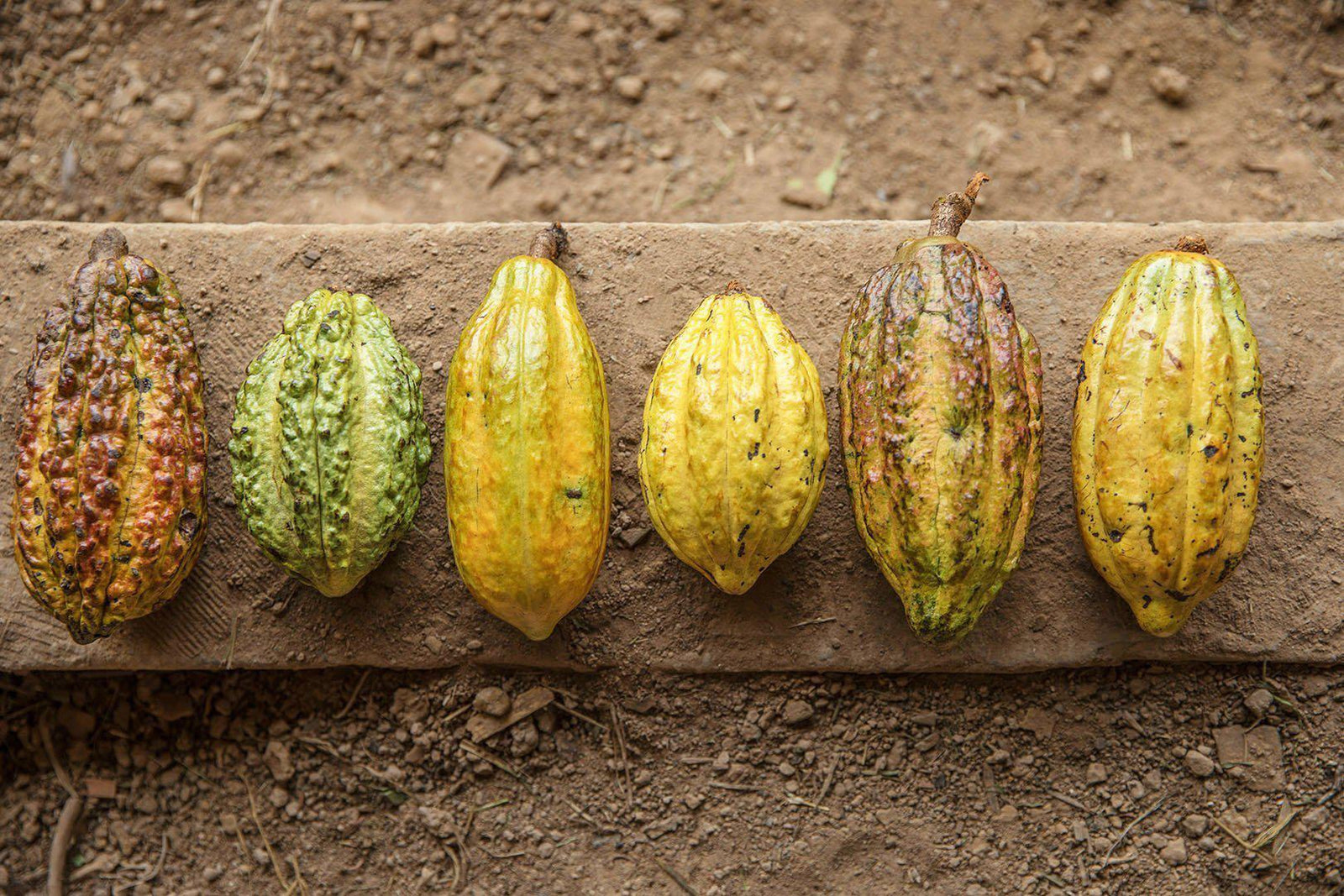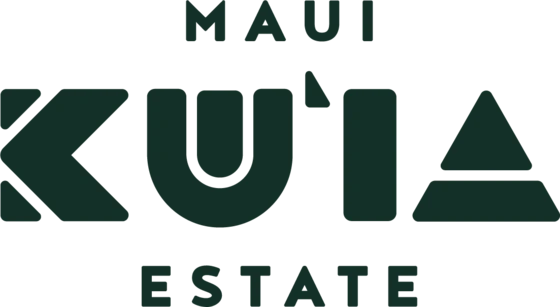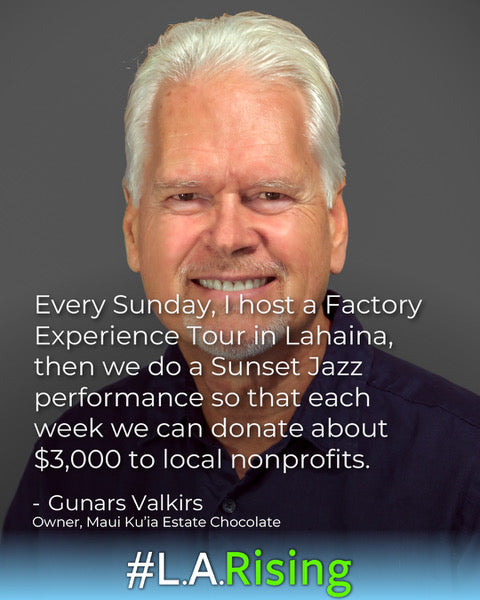
In addition to the cacao that is grown on the Maui Ku’ia Estate Cacao Farm, Ku’ia finds interesting and unique cacao from all over the world to make specialty bars only available to the future members of the Ku’ia Chocolate Club.
 Cracked Pods in Rio Purus, Amazon - Photo : Dan O'Doherty
Cracked Pods in Rio Purus, Amazon - Photo : Dan O'Doherty
Cacao is a process. It is not as simple as picking the cacao fruits and shipping them to Maui to make chocolate. After being harvested, the fruits are broken apart and the seeds are pulled out of the pods and piled into wooden boxes where they undergo fermentation. After the ferment, the seeds are dried before finally being ready to package and ship.
 Dried cacao being evaluated in Rio Purus, Amazon - Photo : Dan O'Doherty
Dried cacao being evaluated in Rio Purus, Amazon - Photo : Dan O'Doherty
A quality chocolate requires attention to detail throughout the cacao process. Dan O’Doherty sources all of Ku’ia’s cacao, which means he canoes up and down the waters of the Amazon finding rare cacao varieties and working with local communities to teach them the correct processes.
The following is excerpted from a phone call with Dan about one of his recent trips to the Amazon.
A couple months back, you went on a trip to South America. You talked about small tribes on the Amazon and shamanic rituals and a cacao that has never before been harvested. What does your day look like when you’re there?
 Man sits on river near Rio Purus - Photo : Dan O'Doherty
Man sits on river near Rio Purus - Photo : Dan O'Doherty
You go a hundred miles up and down the river to source the cacao. The pace of life changes. There are no mirrors, no roads, no cell reception. You spend a lot of time each day on basic tasks, like setting up and breaking down a hammock to sleep in, washing cloths by hand, and filtering drinking water.

Fresh cacao is extracted in Rio Purus - Photo : Dan O'Doherty
Cacao grows all over the forest, but there are few residents to harvest it. If you find 15 residences together, that constitutes a pretty large community along the tributary. A network of small communities go and collect the cacao. They spend several days going up and down the Purus tributaries picking the cacao fruit, which they take back to a larger community where the pods are broken, extracted, and processed.
It is a very rare opportunity to get cacao that is not cultivated. Cacao grows naturally along the tributaries of the Amazon, and one company in Brazil works—on a very small scale—with the communities there.

Dan O'Doherty cracks pods in Rio Purus in the Amazon.
They quickly realized the raw material quality was bad, so 2 years ago, they contacted me and worked out arrangements with an NGO for me to come down to revise the way that they harvest and process the cacao, which led to huge improvements.
What was wrong with the cacao before you arrived?
Before I got there, they were following advice from a chocolate company that resulted in a low quality product. The company was purchasing the bad cacao from them as a charity. They were harvesting extremely ripe fruit. The chocolate company had said the fruit turns yellow when it is ripe. That is true; when the fruits first ripen, they turn to a lemony yellow, and they become more of a golden, deeper yellow as they become overripe. But the total time between the collection of the fruit and fermentation can be anywhere from 4 to 8 days, and the fruits continue to ripen off the trees, so the fruits were overripe by the time they started the fermentation process. Overripe material typically ferments faster than normal. They were doing a full 7 day fermentation which was essentially rotting the cacao. Their fermentation turned black and smelled horrible.
Ripe pods collected in Rio Purus - Photo Dan O'Doherty
I told them to pick any fruit that has 25% color change—even if it is still lime green. I had to demonstrate because the people were like, “we’ve been doing it like this for 10 years.” I went out into the forest and picked 5 fruits that were various stages of under- ripeness and left them on a table. After 3 or 4 days, they were all perfectly yellow. It actually turned out to be more efficient for them because they can harvest a wider range of fruits in each trip up the river.

Cacao drying facility in Rio Purus - Photo Dan O'Doherty
These communities are remote with limited education opportunities and face challenges meeting their basic needs, so processes change innocently. A lot of times, people make changes and they say, “oh this is faster and it doesn’t make any difference.” And I have to say, “well it does.” They never see the finished product. They are not involved in the transformation of that dried seed into chocolate. To them, it more or less looks the same, and I have to politely say, “I know it seems that way, but we really need it to be done this way.”
That sounds like a lot of effort on everybody’s part. Is it worth it?
The quality is really special, and the story is really good. The cacao is naturally occurring and was never put into breeding programs, so it is not in cultivation anywhere else in the world.

Fresh Wild Cacao in Rio Jurua - Photo : Dan O'Doherty
Even though it was largely domesticated in Central America, cacao is only native to the Amazon basin—but what is now grown all over the world is from a very narrow source of genetics. The last time anyone put wild cacao into the breeding pool was the 1930’s. This cacao is not only naturally occurring but you could not find it cultivated because it just does not exist. The story and the flavor profile that come with that are unique. There are notes of blueberry in the chocolate.
And this is one of two communities that you work with in the Amazon, right?
The second community, the ones along the Jurua River, tried to cancel this trip because the river flooded 4 times from New Years till now. The river banks rose 40 feet. The trees were literally underwater, and all the fruits rotted because they were submerged. We were canoeing through the forest.

Sunset along the river in Rio Jurua - Photo : Dan O'Doherty
It was a 2-hour flight, a long drive, and a day-long riverboat trip to visit these people, but if we walked away and said, “see you next year,” they might lose interest. I was willing to go down there for just 1 day to meet them and provide them with reassurance and plan for next year.

Wild Cacao growing in Rio Jurua - Photo : Dan O'Doherty
They have a lot of naturally occurring cacao that—as far as we know—no one has ever harvested and processed before. The forest is more openly structured than the first river system, the Purus. There is also more boat traffic, so there is a lot of potential to develop that region, but that will be a multi-year process.
We just got funding to do the most basic infrastructure. It was a trial. That cacao had never been harvested before, and it could have been unique but uniquely bitter or bad tasting. It was a total unknown. And it turns out that it is really good. Maybe we can create an economy for these communities and at the same time get unique cacao for Ku’ia.
A young girl in Rio Jurua holds a wild cacao pod - Photo : Dan O'Doherty
The community is very interested in building a cacao business because they only have one other source of cash, which is harvesting a type of palm that has a high quality oil that cosmetic manufacturers really like. And they have even more cacao.
Upon evaluating samples, geneticists said these trees are a unique, genetically discrete population. And we really like the flavor profile.
What is that flavor profile?
Really floral, very aromatic. There are other aromatic cacaos. For example, Ecuador is known for being floral but a very different type of floral—different volatile dynamic compounds create those aromas. Gunars described it as rose water.





Leave a comment (all fields required)